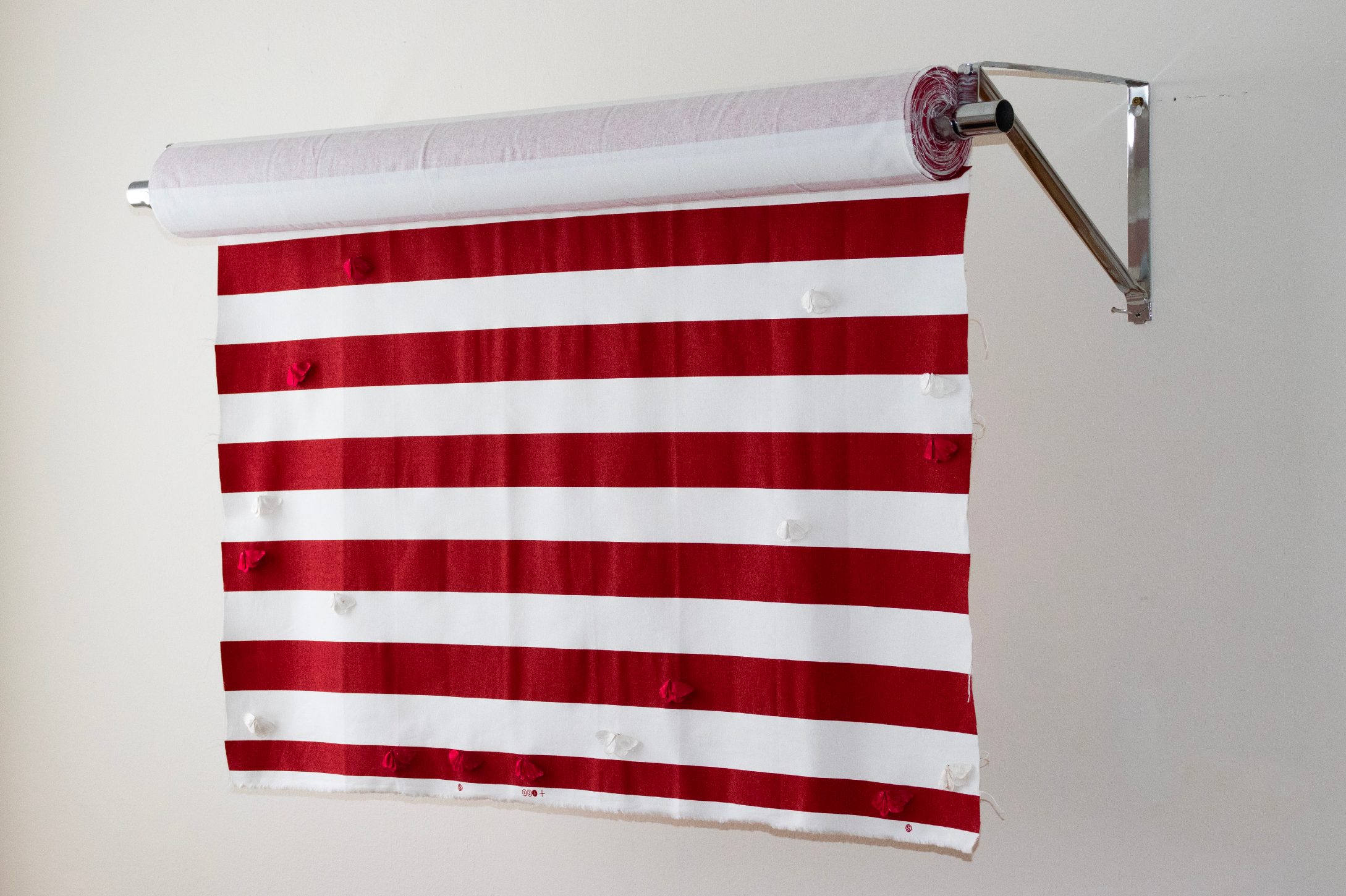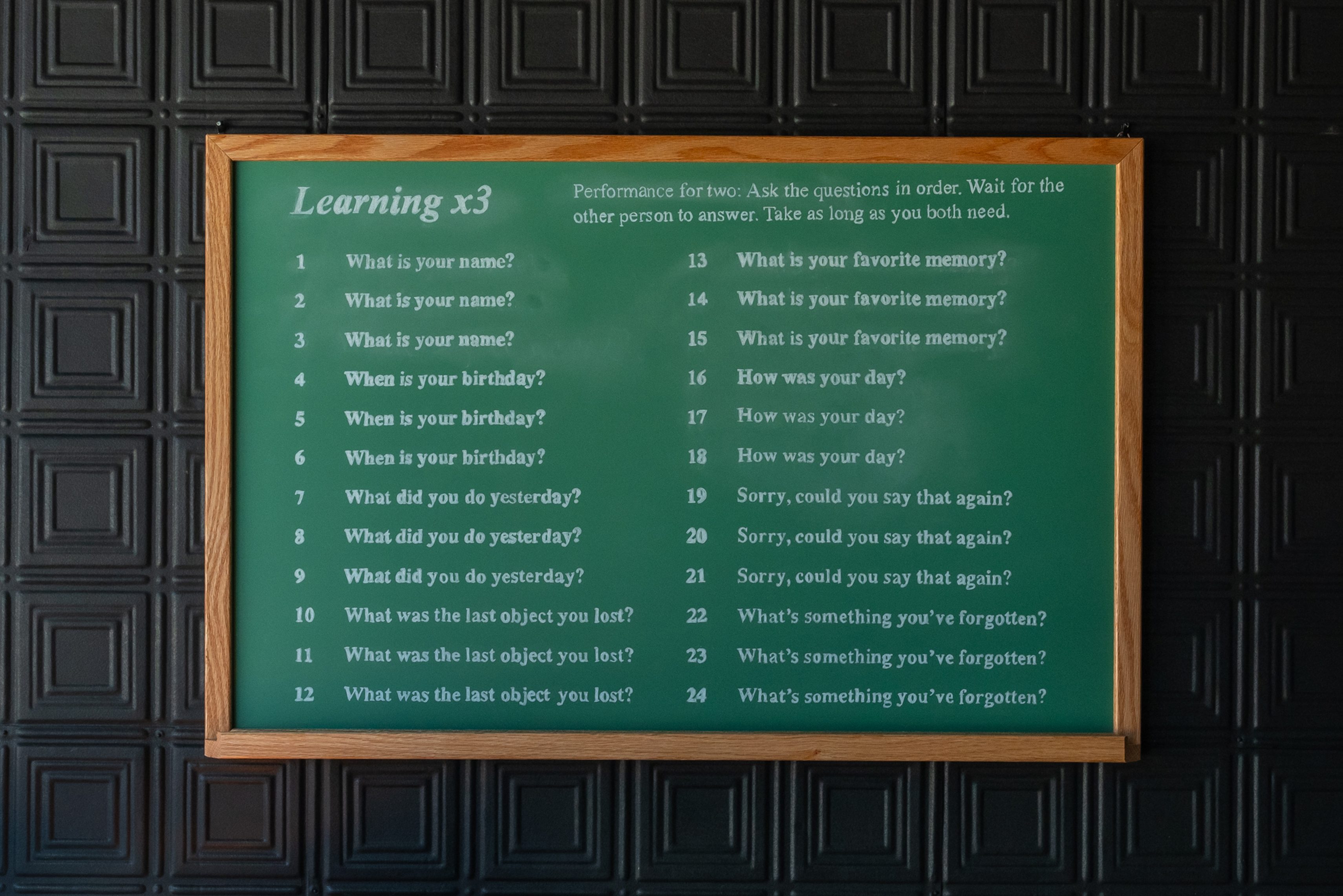Oct 18–Dec 1, 2024
Daniel Shieh (56), MIMICRY

About
Both Sides of The Mouth
By Mike Calway-Fagen
It’s said that imitation is the highest form of flattery, although at times the adage seems dubious at best. It could be a formula for counterfeiting, and maybe the next day a cover band, and the very next, the curious cosmologist’s attempt to uncover the really-real. What’s more likely is that copying something or someone produces a whole host of outcomes, all at once. Maybe a revision is needed, and the cypher will be more accurate: Imitation itself is the highest form. Period. Full stop. However, Daniel has no need for flattery. He’s humble, inquisitive, and his ease with vulnerability comes through in his work. He is a jokester, with jokes like incantations. He raises his own dead. Reanimation through simulation. Resuscitation through stimulation, like beating a dead horse- a Sisyphean exercise in inertia. But sometimes beating the chest leads hearts to circle back around and begin beating again.
Much of Shieh’s past work explores individual experience in choreographed space with light and its source a critical focal point. Each piece is a portal, although stretched or squished into other shapes. Records and radios become gateways. Absurdist constructions become portals, not for escaping to another world but as a reinvestment in the world you’re already in, creating it anew. Keep in mind, you haven’t actually gone anywhere. Your body is still where you left it. It’s only your perspective that has shifted, and you’re having an out-of-person experience. A broken teleportation device that operates on faith.
The large-scale works are experienced from their perimeter as a participant in the world outside, but more importantly inside, transported to a reflective chamber. Getting there requires effort: climbing stairs, advancing down corridors. You must work for transcendence. Daniel shared that his elaborate structures were built by him and him alone, and YouTube. This is an important point as the original intent of the internet was the open dissemination of knowledge, empowerment, and autonomy. Central to Daniel’s process is the negotiation of boundaries; those evidenced in his earlier work and the increasingly elegant solutions he finds in stories and objects that, at least at their face, lack an obvious participatory requirement. The bodies of work are cut from the same cloth, a quilt, but from opposite ends and opposing faces. Depending on the piece and its size you’re either walking into a void or projecting yourself into much smaller sculptures. Children do this all the time when at play, with scale models, doll houses, ants, etc. Proportions that are discordant with normative human-scale are disorienting as well as illuminative. Both miniature and gigantic bring into focus the phenomenological body, implanting it in itself and flushing it out to join the rest of its surroundings.
Often the work has an illusory quality through strategic transmission of light or the complexity of the design. Participants find their conceptions of space and their trust in infrastructure destabilized, resulting in slippages of performative identity. Think lopsided confessional on a hill. Or jumping up toward the ceiling in a descending elevator. Everything and nothing, but just in one place. Daniel’s sculptures fold back on themselves in reflexive subterfuge, a game of cat and mouse, each taking turns deceiving the other. Things interrogate themselves and are bound to one another, and the figure disappears into the ground. Again, children come to mind. Children can’t break rules because they have yet to learn them. This playful precarity of meaning is essential to the exhibition.
Daniel’s piece, Mimicry, initially presents as predictably clever, a superficial wisecrack, maybe something having to do with flags or minimalist-inspired towels. Up close, however, as their camouflage loses its effectiveness, a group of moths begin to materialize. Hiding between the lines. Fashioned from red and white silk they could be doing anything really: disguise, depositing eggs, in a state of torpor, feeding, or even dying. Since we can’t be certain, it must be concluded that they are doing all of those things. What trickery! Can you feel it? This piece continues Daniel’s interest in audience participation, an act that is only appropriate in certain contexts: when, where, what, and how changes. It’s often mixed up, like what transpires in the chrysalis. The piece is on the verge of metamorphosis. The fabric might unroll from its bar or the moths might suddenly take flight. Mimicry compels the viewer to feel it in their body, to be startled or curious, to desire.
It’s hard not to talk about camouflage, subterfuge, and impersonation in binary terms: fact or fiction, authentic/inauthentic, etc. Though, this terminology is good enough for the moment as it offers an introductory voice with which the works will speak. Daniel negotiates polarities by speaking out of both sides of his mouth. But sometimes, when you clamp your lips together and speak from the corners, a little bit slips out the middle.
Whatever the lippy origin may be, he’s not lying but he also isn’t telling the whole truth. By whole truth I mean Daniel’s work carries with it the implicit understanding that truth is not a grand singularity and one thing or person cannot reveal the whole story. There must be at least 2: people, plagues, parsnips, points, poems, etc. Daniel’s work is the etcetera.
Turkeys have a pretty rough lot, at least they do in the US due to a strategic colonial misrepresentation of history. As a result, I’m sure it’s not uncommon for turkeys to become despondent and consider alternative forms. In fact, turkeys are quite intelligent as measured by our anthro-instruments. They also form tight social bonds and extended kin groups. Most people don’t even realize they can fly. It’s fallen out of usage, but at one time, to be called a “turkey” was a serious insult. In contrast, bowling three strikes in a row, what’s called a turkey, is a significant achievement. Turkeys play a symbolic role in the erroneous American origin story. Their flesh, white meat or dark? is eaten to consummate the occasion. Turkeys are the runner-up bald eagles.
Each November a symbolic turkey is spared. She’s given a name to avoid the fate of namelessness, of animality, and her body is pardoned. I can’t eat anything with a face. To be named is to be given a face. The Presidential pardon is theater at its cruelest. Death is a joke. It’s not funny. Right? Why so much about turkeys, you might ask? Because Love Language; the exhibition’s one work incorporating a turkey, a fake one, is the piece that anchors the installation. This doesn’t indicate the piece is any more stable in its meaning. On the contrary, the work feels unhinged, even uncontrollable. The piece is ridiculous, a little lawless, and even bittersweet.
In Reenactment, the two plastic-bound and disarticulated arms feel as though they’ve been yanked from the shoulder sockets of some plastic action figure. I can’t help but also see the “ok” gesture co-opted by white supremacists beneath the original Buddhist mudras intended to communicate the opposite. This is one of the more subtle understories of Mimicry. A story about a place that reproduces others in an attempt to come into proximity with the Authentic. Today, now, after truth, both hand gestures exist. Double entendre becomes essentialist wavy gravy. It makes sense, right: cycles and circles. Koans. The Ouroboros. Death and life. Onion rings. Continuance and perpetual renewal sounds a lot like the production line, churning out endless facsimiles which further down the geological timeline become soil, strata, or something like it. A layer of dried-out markers, Fiji water bottles, and armless Gi Joes.
Image Checklist





Artist
Bio
Daniel Shieh (b. Taiwan) creates immersive installations that manipulate perspective, sense of distance, and visibility to alter the viewer’s perception of each other. His work has been exhibited by LMCC Arts Center, Socrates Sculpture Park, SPRING/BREAK Art Show, Wassaic Project, Franconia Sculpture Park, Josephine Sculpture Park, and I-Park Foundation. He has participated in residencies at Cité Internationale des Arts, MASS MoCA, ACRE, Anderson Ranch, Millay Arts, Fountainhead, and Bronx Museum of the Arts. He received an MDes in Art, Design, and the Public Domain from Harvard University and is based in Brooklyn, New York.


